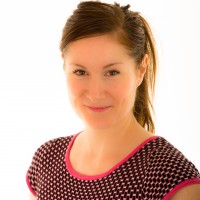
One such business type, operating in the midst of this disruption, is the master broker.
No longer able to rely on closed distribution channels to feed them business, or restricted by the Consumer Credit Act’s ban on charging upfront fees, they have begun to evolve their business models.
Chris Fairfax (pictured), managing director of master broker and packager Positive Lending, believes there is only one option open to him and his peers. “Any master broker involved in this market has to change its fee model if it wants to stay relevant and build a platform to be seen by the wider market as the supplier of secured loans.”
The master broker market is divided over how it sees the future of charging for advice and the arrangement of second charges. Some are comfortable with the status quo. They charge borrowers a percentage of the loan, which covers the master broker’s fee and all costs associated with the loan, negating the need for the customer to pay any fees upfront. Others are looking at ways to align themselves with fee structures more commonly found in the mortgage market.
‘Volume is the key to making this strategy work’
Fairfax has taken Positive down the latter route, and will charge borrowers a fixed fee of £995 for its services; a valuation, if needed, is paid for separately. “Volume is the key to making this strategy work,” he says.
He explains that, because second charge borrowers can now be charged fees, the essential position of the master broker, in between the lender and customer covering all the costs with no guarantee of completion, no longer exists. “Lenders can go directly to introducing brokers or the client now, with no fear of being out of pocket if the client changes their mind,” says Fairfax.
Fairfax sees the direct-to-lender route becoming increasingly popular but, due to a lack of knowledge of the second charge product, not an option which many introducing brokers will opt to use in the immediate future. Aware of this potential threat, Fairfax’s volume strategy, will act like a trigger for a succession of actions. The result will be a cheaper loan for the customer, in both rate and fee.
“We’re going to offer lenders lots of business. In return they will offer us lower interest rates than the broker and client can obtain individually. The broker gets a superior product to offer their client and the client gets a cheaper loan with transparent fees,” he explains.
Moving from small firm to medium-sized company
To make the £995 fee structure profitable, Fairfax knew he had to upscale his operation; a project 18 months in the making.
Having secured a spot on five network panels and working tirelessly to become an established name in the directly authorised broker space, Positive has outgrown its current office and is moving to a bigger home.
Fairfax estimates his market share of advised and packaged second charge business to be around 10% and following the move to premises which can accommodate 75 staff, he feels he will have completed the transition from small firm to medium-sized company.
To cope with the increase in business he has doubled his secured loan team to 16 and expanded the new business development division to five. His business development managers are now conducting 200 to 250 appointments a month.
Time to change
Positive’s flat-fee structure, while not unique, sits within the minority camp of master brokers which have chosen to move away from the tiered percentage structure, which in some cases, sees consumers pay around 10% of their loan to the broker in fees.
“Our model is customer-centric and transparent. I think it’s wrong to charge higher fees for a higher loan amount. Fees should reduce because the broker receives more commission. The incumbent providers have become comfortable with the way they have always charged fees and are not willing to try different models. Their introducers are used to the existing relationships, and aren’t aware there are other models.”
Using a model of mass production, Fairfax hopes to go some way further in his efforts to offer consumers a lower fee for secured loan advice. “The wider our distribution, the more we can reduce our fee. The lower our fee, the more competitive we become which in turn will allow us to increase our distribution.”
Mass production to achieve lower costs seems like a simple strategy, and it is said the simple ideas are often the best, but then ‘they’ also say if it ain’t broke don’t fix it. Which fee-charging strategy will emerge as the victor, remains to be seen, but as innovation springs up across the market, the future of second charges looks set to be exciting.














